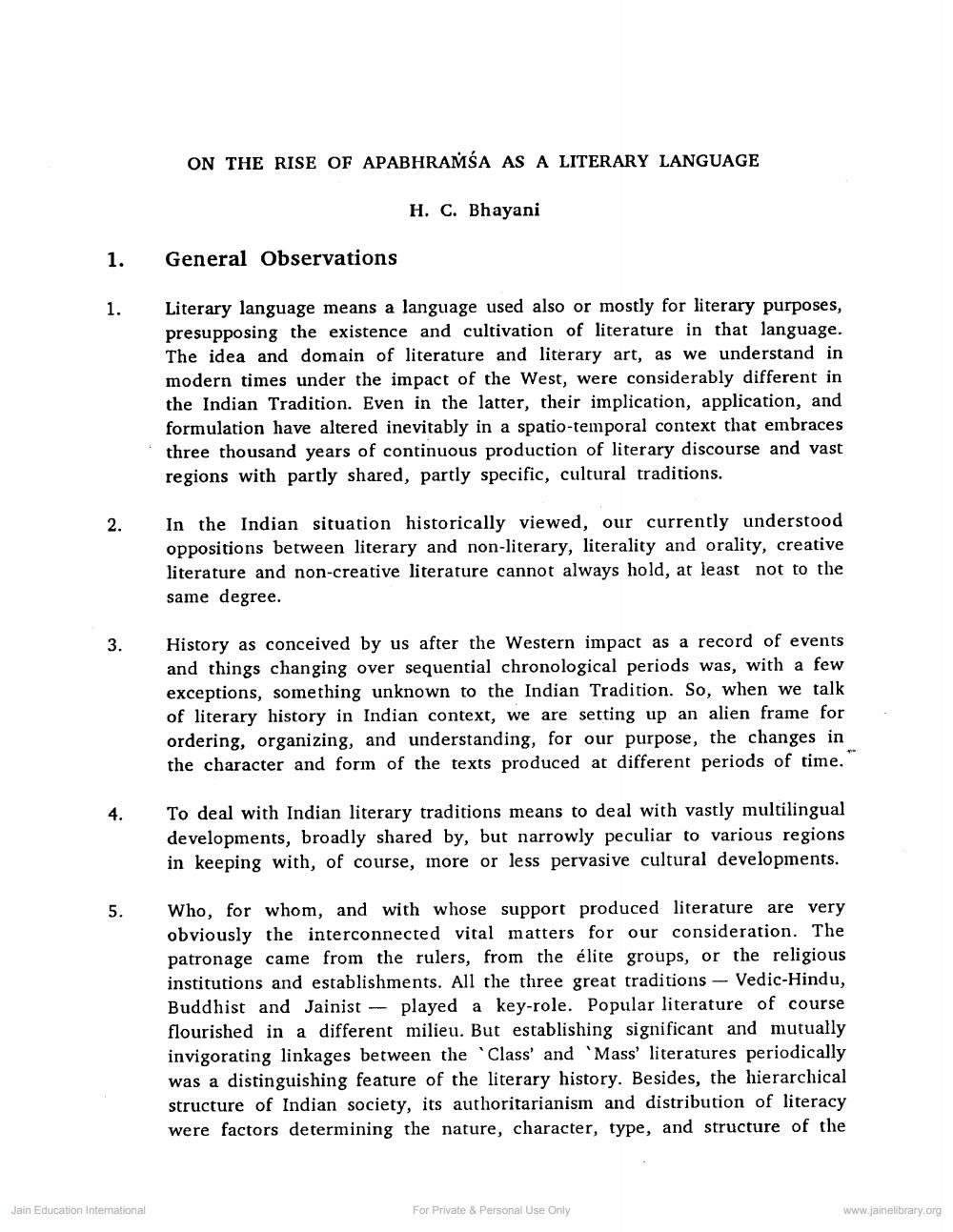________________
ON THE RISE OF APABHRAŇŚA AS A LITERARY LANGUAGE
H. C. Bhayani
1.
General Observations
Literary language means a language used also or mostly for literary purposes, presupposing the existence and cultivation of literature in that language. The idea and domain of literature and literary art, as we understand in modern times under the impact of the West, were considerably different in the Indian Tradition. Even in the latter, their implication, application, and formulation have altered inevitably in a spatio-temporal context that embraces three thousand years of continuous production of literary discourse and vast regions with partly shared, partly specific, cultural traditions.
In the Indian situation historically viewed, our currently understood oppositions between literary and non-literary, literality and orality, creative literature and non-creative literature cannot always hold, at least not to the same degree.
History as conceived by us after the Western impact as a record of events and things changing over sequential chronological periods was, with a few exceptions, something unknown to the Indian Tradition. So, when we talk of literary history in Indian context, we are setting up an alien frame for ordering, organizing, and understanding, for our purpose, the changes in the character and form of the texts produced at different periods of time.
To deal with Indian literary traditions means to deal with vastly multilingual developments, broadly shared by, but narrowly peculiar to various regions in keeping with, of course, more or less pervasive cultural developments.
Who, for whom, and with whose support produced literature are very obviously the interconnected vital matters for our consideration. The patronage came from the rulers, from the elite groups, or the religious institutions and establishments. All the three great traditions - Vedic-Hindu, Buddhist and Jainist - played a key-role. Popular literature of course flourished in a different milieu. But establishing significant and mutually invigorating linkages between the 'Class' and 'Mass' literatures periodically was a distinguishing feature of the literary history. Besides, the hierarchical structure of Indian society, its authoritarianism and distribution of literacy were factors determining the nature, character, type, and structure of the
Jain Education International
For Private & Personal Use Only
www.jainelibrary.org




